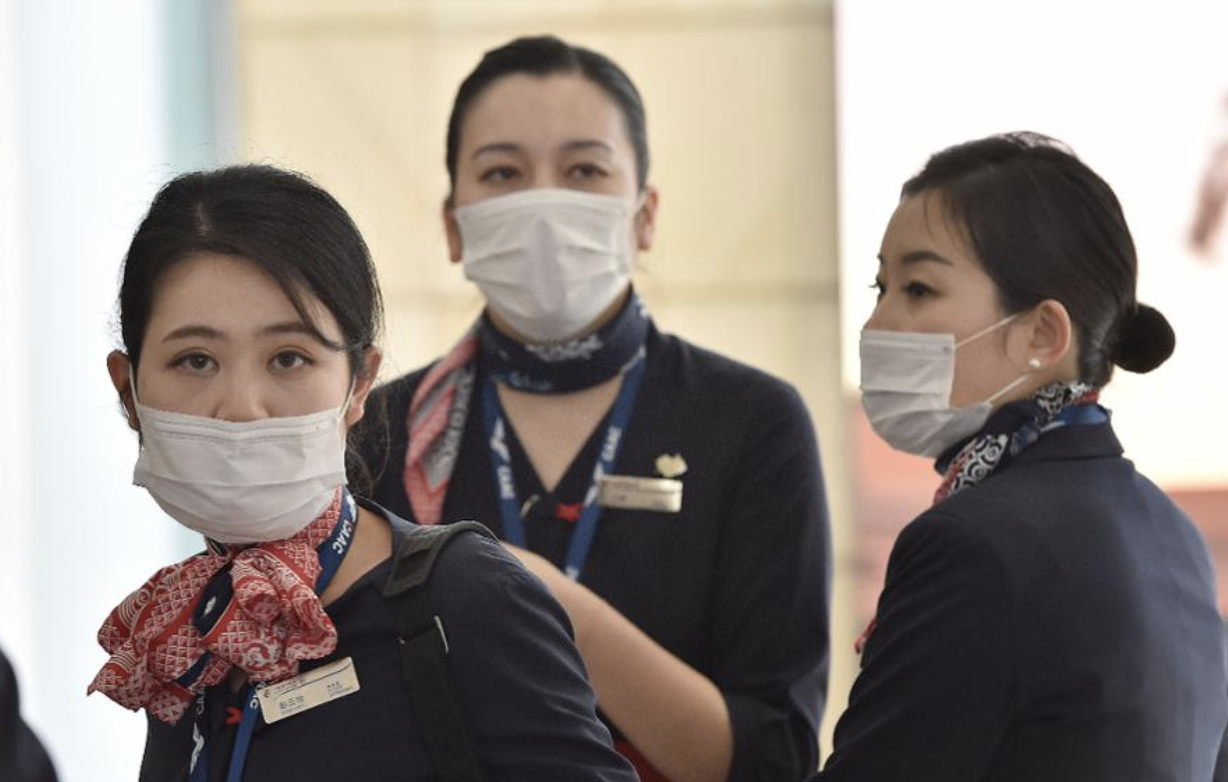American & Chinese Airlines May Never Bounce Back From The Coronavirus Outbreak
Airlines around the world have already taken a hit thanks to Boeing, now the coronavirus outbreak is set to kick the industry while it’s already down. And the US and China will be hit especially hard.
Plenty of countries are cutting off are limiting flights to China right now. Air Canada just announced its cancelling select flights, South Korea, Hong Kong and other Asian countries have either cut off travel, or are reducing flights and screening for symptoms of nCoV, which has already killed more than 100 people in China, and possibly a Thai woman in India as well. But when it’s all said and done, air traffic between the US and China might never really recover, dealing a serious blow to both Chinese and American airlines at a time when their shares are already taking a beating.
In a recent column, Forbes contributor Michael Boyd warned that air said that even with solid data, is full of unknowns. But one thing we can rely upon in aviation forecasting is that it’s unforeseen factors that suddenly spring out of left field that will drive change.
Two years ago, the future looked bright. China’s burgeoning middle class was traveling more, and the US was a perennial favorite destination, not just for students, but for travelers and shoppers looking to buy luxury goods on NYC’s Fifth Avenue, or SoHo.
But by the middle of 2019, with the trade war, having raged for more than a year, in full swing, China’s economy started to show signs of strain, as growth started to cool from a frantic, often double-digit pace of expansion, eventually notching its weakest quarter of growth in 29 years.
However, the slowdown from the trade war and the drag of China’s economy at least allowed the airlines to easily model slowing traffic and coordinate accordingly. Now, that’s all gone out the window: the coronavirus has arrived and that’s created many new unknowns.
After the bell on Tuesday, Starbucks announced that the coronavirus will likely hurt growth in its international business, which is heavily dependent on China. The chain seemed to already have its hands full competing against a slew of new local competitors.
It’s a virtual certainty that the airlines will follow up with similar warnings, though theirs will likely be much more dismal, and preceded by a wave of downgrades to the Street’s projections.
Boyd, whose analysis focuses on the airline industry, said his previous forecast of 7.08 million passengers on US-China flights in 2020 is “now history,” and he barely knows where to begin to put together the next set of forecasts. The damage will linger for six months or longer, he added.
Take it to the bank: this epidemic will materially affect the flight levels between China and the United States, because airlines don’t like to fly nearly-empty airplanes.
Perhaps the word “affect” is too weak. The reality is that this event is going to devastate traffic for a period of at least six months or maybe longer. It will depend on how much this epidemic spreads, and how the Chinese government addresses it.
My consultancy had estimated that U.S.-China flights would carry about 7.08 million passengers for 2020, adding inbound and outbound travelers.
That number is now history.
It’s possible that the number of passengers on US-China flights could fall by 75% in 2020. It’s possible that this supposition is optimistic. As leisure travel dries up, more than half of the passenger base for these flights will disappear.
As of today, and depending on the developments in China, through this June we are forecasting at least a 75% drop in passenger traffic between the USA and China. That figure sounds extreme, but as the knowledge of the nature and the extent of the new virus grows, it may actually be optimistic.
Cutting to the chase, airline flights between China and the USA are going to be financial disasters. That assumes, somewhat optimistically, they all will even continue to operate.
For one thing, leisure traffic – about 60% of the passenger base – is effectively ended. Gone. No more. Evaporated.
In response, flights to the US from China’s second-tier cities will likely become too costly to continue (since near-empty planes rack up tremendous losses pretty quickly). These routes may never reopen.
Boyd jokes that these flights will soon be carrying nothing but “sailboat fuel” (get it?). Before the virus, the average flight between China and the US was 83% filled to capacity. Expect that figure to drop to below 50%. And for the remaining airports that continue running flights between the US and China, well, those flights are about to become major loss-leaders. In the US, airports that are common gateways for Chinese travelers will take the brunt of the damage: San Francisco’s international airport will see about 344,000 fewer passengers, while LA will see 702,000 fewer passengers.
On the other hand, trade between the US and China is expected to climb now that Beijing has pledged to increase imports of ag products, energy and other items from the US to the tune of $200 billion using old-fashioned, centrally-planned mandates for state companies. However, some are skeptical that this is a promise that Beijing intends to keep.
Though if epidemiologists are correct in their projections about the coronavirus’s infectious potential, then we might all have more important things to worry about very soon.
Tyler Durden
Wed, 01/29/2020 – 09:17
via ZeroHedge News https://ift.tt/3155QFw Tyler Durden
